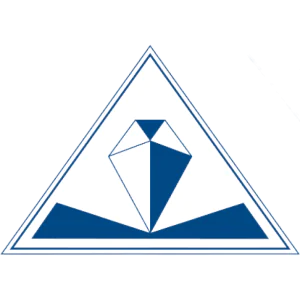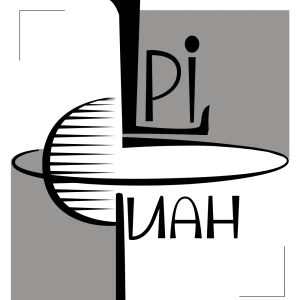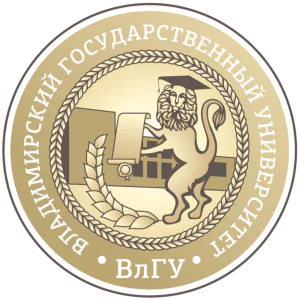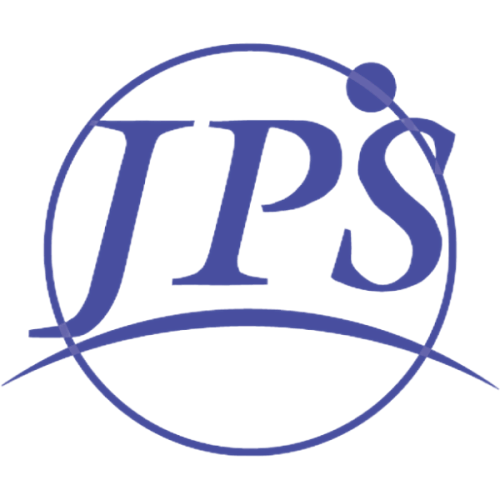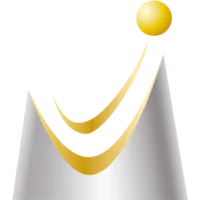Conventional superconductivity at 203 kelvin at high pressures in the sulfur hydride system
Publication type: Journal Article
Publication date: 2015-08-17
scimago Q1
wos Q1
SJR: 18.288
CiteScore: 78.1
Impact factor: 48.5
ISSN: 00280836, 14764687
PubMed ID:
26280333
Multidisciplinary
Abstract
Conventional superconductivity is observed at 203 kelvin in the sulfur hydride system, well above the highest superconducting transition temperature obtained in the copper oxides, raising hopes that even higher transition temperatures will be discovered in other hydrogen-rich systems. The discovery of high-temperature superconductivity in the copper oxides nearly thirty years ago raised hopes for the imminent realization of room-temperature superconductivity. But after initial successes, progress towards this goal stalled. For more than two decades the 'record' has stood at 133 K at ambient pressure and 164 K under high pressures. The quest is now renewed with the discovery of superconductivity at 203 K in the sulfur hydride system. By subjecting hydrogen sulfide (H2S) to extreme pressures, Alexander Drozdov et al. have produced an enigmatic phase — which might be H3S — that shows the clear signatures of superconductivity at 203 K or minus 70°C. The presence of hydrogen is key to this finding, raising the prospect that even higher transition temperatures — possibly even approaching room temperature — will be discovered in other hydrogen-rich systems. A superconductor is a material that can conduct electricity without resistance below a superconducting transition temperature, Tc. The highest Tc that has been achieved to date is in the copper oxide system1: 133 kelvin at ambient pressure2 and 164 kelvin at high pressures3. As the nature of superconductivity in these materials is still not fully understood (they are not conventional superconductors), the prospects for achieving still higher transition temperatures by this route are not clear. In contrast, the Bardeen–Cooper–Schrieffer theory of conventional superconductivity gives a guide for achieving high Tc with no theoretical upper bound—all that is needed is a favourable combination of high-frequency phonons, strong electron–phonon coupling, and a high density of states4. These conditions can in principle be fulfilled for metallic hydrogen and covalent compounds dominated by hydrogen5,6, as hydrogen atoms provide the necessary high-frequency phonon modes as well as the strong electron–phonon coupling. Numerous calculations support this idea and have predicted transition temperatures in the range 50–235 kelvin for many hydrides7, but only a moderate Tc of 17 kelvin has been observed experimentally8. Here we investigate sulfur hydride9, where a Tc of 80 kelvin has been predicted10. We find that this system transforms to a metal at a pressure of approximately 90 gigapascals. On cooling, we see signatures of superconductivity: a sharp drop of the resistivity to zero and a decrease of the transition temperature with magnetic field, with magnetic susceptibility measurements confirming a Tc of 203 kelvin. Moreover, a pronounced isotope shift of Tc in sulfur deuteride is suggestive of an electron–phonon mechanism of superconductivity that is consistent with the Bardeen–Cooper–Schrieffer scenario. We argue that the phase responsible for high-Tc superconductivity in this system is likely to be H3S, formed from H2S by decomposition under pressure. These findings raise hope for the prospects for achieving room-temperature superconductivity in other hydrogen-based materials.
Found
Nothing found, try to update filter.
Found
Nothing found, try to update filter.
Top-30
Journals
|
50
100
150
200
250
300
350
|
|
|
Physical Review B
346 publications, 15.84%
|
|
|
Journal of Physics Condensed Matter
64 publications, 2.93%
|
|
|
Journal of Superconductivity and Novel Magnetism
54 publications, 2.47%
|
|
|
Journal of Physical Chemistry C
53 publications, 2.43%
|
|
|
Physical Chemistry Chemical Physics
48 publications, 2.2%
|
|
|
Scientific Reports
45 publications, 2.06%
|
|
|
Nature Communications
42 publications, 1.92%
|
|
|
Journal of Applied Physics
34 publications, 1.56%
|
|
|
Physical Review Materials
31 publications, 1.42%
|
|
|
Materials Today Physics
31 publications, 1.42%
|
|
|
Physica C: Superconductivity and its Applications
29 publications, 1.33%
|
|
|
Superconductor Science and Technology
29 publications, 1.33%
|
|
|
Journal of Materials Chemistry C
29 publications, 1.33%
|
|
|
Inorganic Chemistry
27 publications, 1.24%
|
|
|
Physical Review Letters
27 publications, 1.24%
|
|
|
Nature
25 publications, 1.14%
|
|
|
Chinese Physics B
23 publications, 1.05%
|
|
|
Journal of Alloys and Compounds
22 publications, 1.01%
|
|
|
Journal of Chemical Physics
21 publications, 0.96%
|
|
|
Journal of the American Chemical Society
20 publications, 0.92%
|
|
|
Matter and Radiation at Extremes
20 publications, 0.92%
|
|
|
Condensed Matter
20 publications, 0.92%
|
|
|
npj Computational Materials
19 publications, 0.87%
|
|
|
Journal of Physical Chemistry Letters
18 publications, 0.82%
|
|
|
National Science Review
18 publications, 0.82%
|
|
|
Physica B: Condensed Matter
18 publications, 0.82%
|
|
|
Solid State Communications
18 publications, 0.82%
|
|
|
Chinese Physics Letters
18 publications, 0.82%
|
|
|
Proceedings of the National Academy of Sciences of the United States of America
17 publications, 0.78%
|
|
|
50
100
150
200
250
300
350
|
Publishers
|
50
100
150
200
250
300
350
400
450
|
|
|
American Physical Society (APS)
438 publications, 20.05%
|
|
|
Springer Nature
327 publications, 14.97%
|
|
|
Elsevier
296 publications, 13.55%
|
|
|
IOP Publishing
194 publications, 8.88%
|
|
|
American Chemical Society (ACS)
175 publications, 8.01%
|
|
|
Wiley
127 publications, 5.82%
|
|
|
AIP Publishing
123 publications, 5.63%
|
|
|
Royal Society of Chemistry (RSC)
119 publications, 5.45%
|
|
|
MDPI
61 publications, 2.79%
|
|
|
Oxford University Press
27 publications, 1.24%
|
|
|
Pleiades Publishing
26 publications, 1.19%
|
|
|
Cambridge University Press
22 publications, 1.01%
|
|
|
Taylor & Francis
19 publications, 0.87%
|
|
|
Physical Society of Japan
18 publications, 0.82%
|
|
|
Proceedings of the National Academy of Sciences (PNAS)
17 publications, 0.78%
|
|
|
World Scientific
17 publications, 0.78%
|
|
|
American Association for the Advancement of Science (AAAS)
15 publications, 0.69%
|
|
|
Institute of Electrical and Electronics Engineers (IEEE)
14 publications, 0.64%
|
|
|
Japan Society of High Pressure Science and Technology
13 publications, 0.6%
|
|
|
Science in China Press
9 publications, 0.41%
|
|
|
Acta Physica Sinica, Chinese Physical Society and Institute of Physics, Chinese Academy of Sciences
9 publications, 0.41%
|
|
|
Uspekhi Fizicheskikh Nauk Journal
8 publications, 0.37%
|
|
|
Japan Society of Applied Physics
8 publications, 0.37%
|
|
|
Japan Institute of Metals
5 publications, 0.23%
|
|
|
IntechOpen
5 publications, 0.23%
|
|
|
Frontiers Media S.A.
4 publications, 0.18%
|
|
|
Scientific Research Publishing
4 publications, 0.18%
|
|
|
Institute of Physics, Polish Academy of Sciences
3 publications, 0.14%
|
|
|
Trans Tech Publications
3 publications, 0.14%
|
|
|
50
100
150
200
250
300
350
400
450
|
- We do not take into account publications without a DOI.
- Statistics recalculated weekly.
Are you a researcher?
Create a profile to get free access to personal recommendations for colleagues and new articles.
Metrics
2.2k
Total citations:
2184
Citations from 2025:
271
(12.41%)
Cite this
GOST |
RIS |
BibTex |
MLA
Cite this
GOST
Copy
Drozdov A. P. et al. Conventional superconductivity at 203 kelvin at high pressures in the sulfur hydride system // Nature. 2015. Vol. 525. No. 7567. pp. 73-76.
GOST all authors (up to 50)
Copy
Drozdov A. P., Eremets M. I., Troyan I. A., Ksenofontov V., Shylin S. I. Conventional superconductivity at 203 kelvin at high pressures in the sulfur hydride system // Nature. 2015. Vol. 525. No. 7567. pp. 73-76.
Cite this
RIS
Copy
TY - JOUR
DO - 10.1038/nature14964
UR - https://doi.org/10.1038/nature14964
TI - Conventional superconductivity at 203 kelvin at high pressures in the sulfur hydride system
T2 - Nature
AU - Drozdov, A P
AU - Eremets, M. I.
AU - Troyan, I A
AU - Ksenofontov, V
AU - Shylin, S I
PY - 2015
DA - 2015/08/17
PB - Springer Nature
SP - 73-76
IS - 7567
VL - 525
PMID - 26280333
SN - 0028-0836
SN - 1476-4687
ER -
Cite this
BibTex (up to 50 authors)
Copy
@article{2015_Drozdov,
author = {A P Drozdov and M. I. Eremets and I A Troyan and V Ksenofontov and S I Shylin},
title = {Conventional superconductivity at 203 kelvin at high pressures in the sulfur hydride system},
journal = {Nature},
year = {2015},
volume = {525},
publisher = {Springer Nature},
month = {aug},
url = {https://doi.org/10.1038/nature14964},
number = {7567},
pages = {73--76},
doi = {10.1038/nature14964}
}
Cite this
MLA
Copy
Drozdov, A. P., et al. “Conventional superconductivity at 203 kelvin at high pressures in the sulfur hydride system.” Nature, vol. 525, no. 7567, Aug. 2015, pp. 73-76. https://doi.org/10.1038/nature14964.
Profiles







